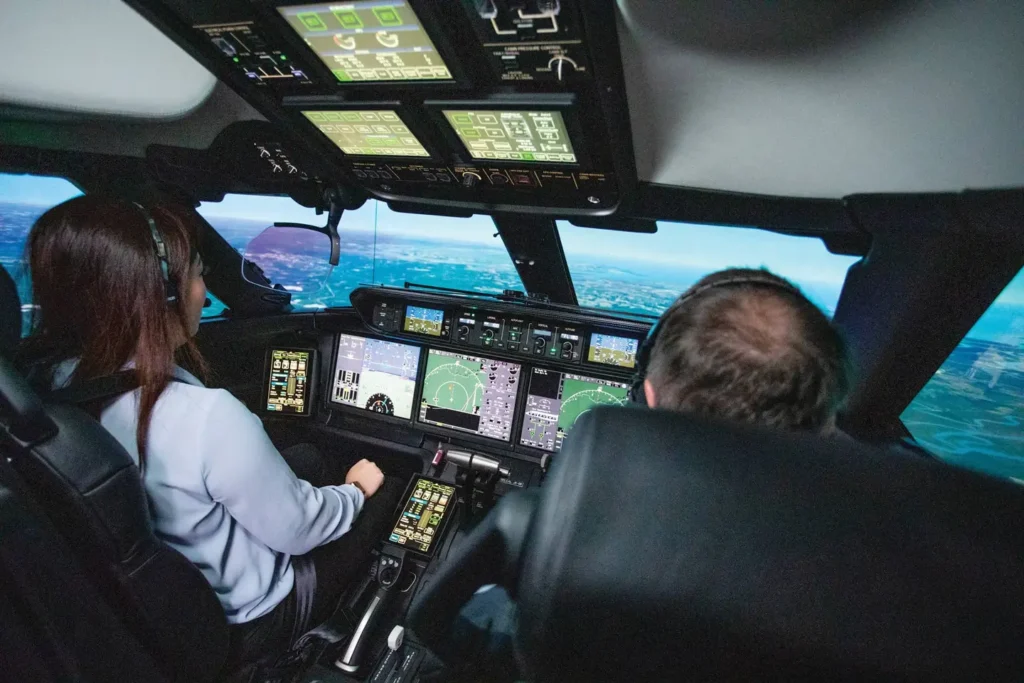Real Experience with Aviator Online Simulator
Real-life experiences with the real Aviator online simulator will define its work ability to be just about perfect in replicating real-life flying scenarios. Users often describe how the software doubles various flight conditions, such as different weather patterns and emergency situations. This realistic environment really helps the pilots practice essential skills and decision-making in a controlled setting.
Setting Up the Aviator Simulator
Not much hassle is involved in setting up a real Aviator; it is intuitively interfaced and pretty easy to navigate around. The layout is designed in a way that helps the user to figure out different features and settings easily for improved functionality.
The program will work on different devices like computers running Windows and macOS. Therefore, such a variant will be suitable for many users because it works directly on their favourite platforms.
To install the Aviator real simulator, follow these steps:
Realistic Flight Controls and Navigation
The Aviator real flight simulator features realistic aircraft controls, with a close similarity in regard to actual aircraft systems. The layout involves various controls that mirror those found in actual aircraft, allowing users to execute throttle management, ailerons, rudders, and elevators. This, in turn, assists in developing the muscle memory required for flying.
The program navigation tools and equipment would further be designed to look and feel precisely like those one finds on actual aircraft. Users would engage an altimeter, a heading indicator, and GPS systems to simulate the difficulties associated with navigating through various flight conditions.
Experience dealing with such navigation tools is highly relevant to understanding spatial awareness and course maintenance. To this end, the software allows practice in guidance on navigation during clear and poor visibility conditions by improving one’s performance in route planning and real-time adjustments.

Handling Weather Conditions in the Aviator Online Simulator
Handling weather conditions in the Aviator real simulator involves simulating real-time weather changes, providing users with a comprehensive training experience. This simulator can simulate varied states of weather, such as rain, fog, turbulence, and thunderstorms, hence allowing pilots to practice flying in such conditions.
As pilots encounter these simulated weather changes, they learn to adapt to different flying conditions. This includes adjusting flight paths, managing speed, and altering altitude to maintain control and safety. The ability to respond effectively to adverse weather is crucial for real-world flying.
The simulator also emphasises the importance of using instruments to navigate through poor visibility. Pilots practice relying on their cockpit instruments rather than visual references, enhancing their skills in instrument flight rules (IFR) flying.
Emergency Scenarios and Crisis Management
Such emergency scenarios and crisis management in the Aviator Online Simulator provide critical training for aspiring pilots in the following situations: practising how to act in case of an engine failure, onboard fire, and turbulence in comfort and safety. Each situation is designed to test the presidents and make sure that they will respond effectively under pressure.
During an engine failure simulation, trainees learn to manage the aircraft’s control and navigate toward a safe landing area. The simulator also replicates fire emergencies, teaching pilots how to execute emergency procedures, including communication with air traffic control and assessing cabin conditions.
Turbulence scenarios help pilots build strategies that will keep them in control and ensure passenger comfort in those instances when there is a sudden change in weather. In such simulations, pilots learn to make quick decisions by prioritising safety.
Real-time learning of emergency response techniques is a key feature of the simulator. Pilots receive immediate feedback on their performance, helping them to refine their skills and responses to crises.
Advanced Maneuvers in the Aviator Simulator
Emergency scenarios and crisis management in the Aviator Simulator focus on testing complex aerobatic skills and high-speed manoeuvres. These scenarios challenge pilots to perform precise actions under demanding conditions, enhancing their overall proficiency.
In high-speed manoeuvres, pilots practice executing sharp turns, rapid ascents, and descents. These actions require quick reflexes and strong spatial awareness. Understanding the aircraft’s limitations is crucial during these exercises to prevent loss of control.
Recovery exercises are also a key component. These involve simulating situations such as stalls or spins, where pilots must apply appropriate recovery techniques to regain control. The process typically includes reducing the angle of attack, applying the opposite rudder, and regaining altitude smoothly.

Comparing the Aviator Simulator to Real-Life Flying
The Aviator Simulator effectively prepares users for real-world situations by replicating many aspects of actual flight training. It allows pilots to practice various maneuvers, manage emergencies, and become familiar with cockpit instruments in a safe environment. This preparation enhances decision-making skills and builds confidence for real flight scenarios.
| Aspect | Aviator Simulator | Real-Life Flying |
| Cost | Generally lower operational costs | Higher costs due to fuel and maintenance |
| Safety | No risk of physical harm | Risk of accidents and injuries |
| Environment | Controlled and adjustable conditions | Variable conditions (weather, air traffic) |
| Emergency Practice | Simulates various emergencies | Real-world emergencies are unpredictable |
| Feedback | Instant performance feedback | Delayed feedback from instructors |
| Experience | Limited to simulated scenarios | Hands-on experience with actual flying |
Realism and Effectiveness of the Aviator Online Simulator
The online simulator Aviator is real and effective, building a robust training experience both for dreamers who just wish to fly and for professional aviators. Flight dynamics, cockpit controls, and every kind of environmental condition are thoroughly emulated in the simulator, enabling pilots to practice flying under aviator real or fake circumstances as closely as possible. The users gain important experience in dealing with various situations—be it emergency procedures or navigation problems.
The simulator is an extreme building block for foundation and ingraining confidence in would-be aviators, while accomplished fliers can perfect advanced methods and freshen their emergency procedures’ knowledge.
Also, practice regularly in real Aviator and request feedback to maximise benefits from training. The ability to make decisions can be further strengthened in regular simulations of different weather conditions and any emergency scenario that may arise. The program, as an augmentation for flight training, will increase overall proficiency and prepare pilots to handle all flying eventualities.
